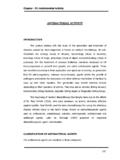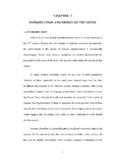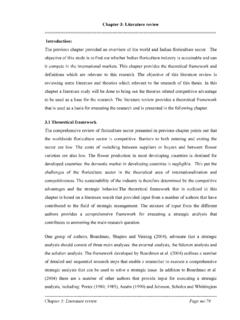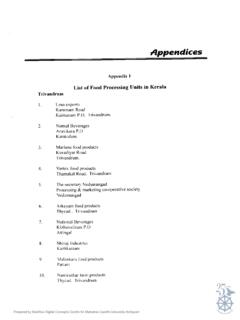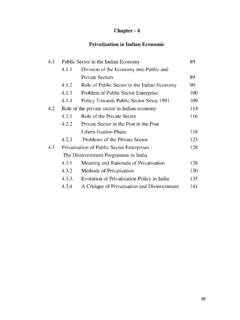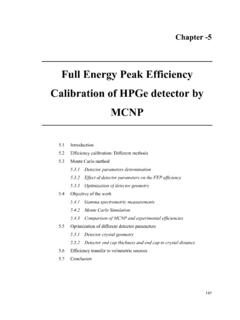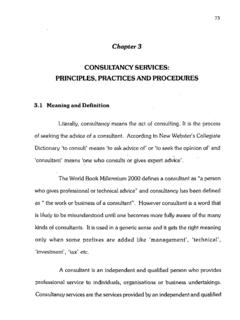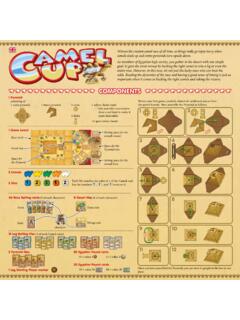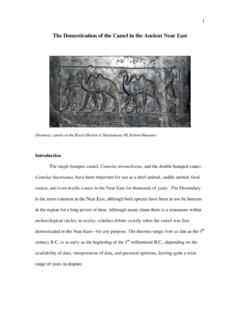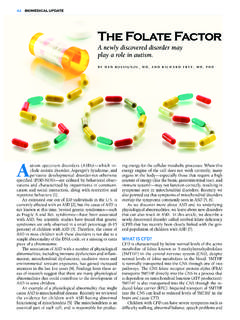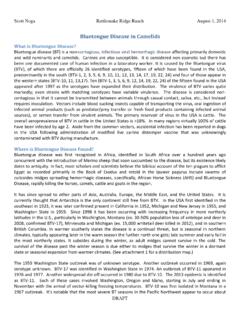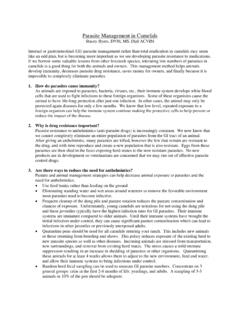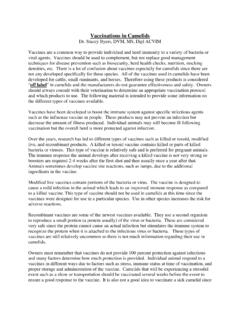Transcription of CHAPTER 2 CAMEL MODEL - Shodhganga
1 60 CHAPTER 2 CAMEL MODEL CONCEPTUAL FRAMEWORK - 61 Introduction CAMEL MODEL of rating was first developed in the 1970s by the three federal banking supervisors of the (the Federal Reserve, the FDIC and the OCC) as part of the regulators Uniform Financial Institutions Rating System , to provide a convenient summary of bank condition at the time of its on-site examination. The banks were judged on five different components under the acronym C-A-M-E-L: C Capital Adequacy A Asset Quality M Management Soundness E Earnings Capacity and L Liquidity The banks received a score of 1 through 5 for each component of CAMEL and a final CAMEL rating representing the composite total of the component CAMEL scores as a measure of the bank s overall condition.
2 The system of CAMEL was revised in 1996, when agencies added an additional parameter S for assessing sensitivity to market risk , thus making it camels that is in vogue today. Based on the recommendations of the Padmanbhan Committee, the commercial banks incorporated in India are presently rated on the camels MODEL (Capital adequacy, Asset quality, Management, Earnings, Liquidity, and Systems & control), while foreign banks branches operating in India are rated under the CALCS MODEL (Capital adequacy, Asset quality, Liquidity, Compliance, and Systems & control). As mentioned above, the Committee had originally recommended a CACS MODEL , which was subsequently modified to also include Liquidity (L) as an additional parameter.
3 Further modifications, in the form comprising additional granularities in the rating scale of parameters under camels have since been introduced by RBI. Presently, each of the components of camels is rated on a scale of 1-100 in ascending order of performance. The score of each camels element is arrived by aggregating (by assigning proportionate weights) the scores of various sub-parameters that constitute the individual camels parameter. Each parameter is awarded a rating A-D (A-Good, B Satisfactory, C -unsatisfactory, and D-poor). Further, to bring granularity in rating, there are modifiers by way of (+) and (-) under each of A, B and C making a total of ten scales A+ through to D.
4 The composite camels rating is arrived by aggregating each of the component weights as indicated in the table below. Further 62 the overall composite score is adjusted downwards for poor performance in one or more components. CAMEL The CAMEL rating is a supervisory rating system originally developed in the to classify a bank's overall condition. It's applied to every bank and credit union in the (approximately 8,000 institutions) and is also implemented outside the by various banking supervisory regulators. The ratings are assigned based on a ratio analysis of the financial statements, combined with on-site examinations made by a designated supervisory regulator.
5 In the these supervisory regulators include the Federal Reserve, the Office of the Comptroller of the Currency, the National Credit Union Administration, and the Federal Deposit Insurance Corporation. Ratings are not released to the public but only to the top management to prevent a possible bank run on an institution which receives a camels rating downgrade.[1] Institutions with deteriorating situations and declining camels ratings are subject to ever increasing supervisory scrutiny. Failed institutions are eventually resolved via a formal resolution process designed to protect retail depositors. CAMEL FRAMEWORK and MAJOR RATIOS During an on-site bank exam, supervisors gather private information, such as details on problem loans, with which to evaluate a bank's financial condition and to monitor its compliance with laws and regulatory policies.
6 A key product of such an exam is a supervisory rating of the bank's overall condition, commonly referred to as a camels rating. The acronym " CAMEL " refers to the five components of a bank's condition that are assessed: Capital adequacy, Asset quality, Management, Earnings, and Liquidity. A sixth component, a bank's Sensitivity to market risk was added in 1997; hence the acronym was changed to camels . camels is basically a ratio-based MODEL for evaluating the performance of banks. Various ratios forming this MODEL are explained below: 63 CAPITAL ADEQUACY - C Capital base of financial institutions facilitates depositors in forming their risk perception about the institutions.
7 Also, it is the key parameter for financial managers to maintain adequate levels of capitalization. Moreover, besides absorbing unanticipated shocks, it signals that the institution will continue to honour its obligations. The most widely used indicator of capital adequacy is capital to risk-weighted assets ratio (CRWA). According to Bank Supervision Regulation Committee (The Basle Committee) of Bank for International Settlements, a minimum 9 per cent CRWA is required. Capital adequacy ultimately determines how well financial institutions can cope with shocks to their balance sheets. Thus, it is useful to track capital-adequacy ratios that take into account the most important financial risks foreign exchange, credit, and interest rate risks by assigning risk weightings to the institution s assets.
8 A sound capital base strengthens confidence of depositors. This ratio is used to protect depositors and promote the stability and efficiency of financial systems around the world. The following ratios measure capital adequacy: 1 Capital Risk Adequacy Ratio: CRAR is a ratio of Capital Fund to Risk Weighted Assets. Reserve Bank of India prescribes banks to maintain a minimum Capital to risk-weighted Assets Ratio (CRAR) of 9 % with regard to credit risk, market risk and operational risk on an on-going basis, as against 8 % prescribed in Basel documents. Total capital includes Tier-I capital and Tier-II capital. Tier-I capital includes paid up equity capital, free reserves, intangible assets etc.
9 Tier-II capital includes long term unsecured loans, loss reserves, hybrid debt capital instruments etc. The higher the CRAR, the stronger is considered a bank, as it ensures high safety against bankruptcy. CRAR = Capital/ Total Risk Weighted Credit Exposure 64 2 Debt Equity Ratio: This ratio indicates the degree of leverage of a bank. It indicates how much of the bank business is financed through debt and how much through equity. This is calculated as the proportion of total asset liability to net worth. Outside liability includes total borrowing, deposits and other liabilities. Net worth includes equity capital and reserve and surplus. Higher the ratio indicates less protection for the creditors and depositors in the banking system.
10 Borrowings/ (Share Capital + reserves) 3 Total Advance to Total Asset Ratio: This is the ratio of the total advances to total asset. This ratio indicates banks aggressiveness in lending which ultimately results in better profitability. Higher ratio of advances of bank deposits (assets) is preferred to a lower one. Total advances also include receivables. The value of total assets is excluding the revolution of all the assets. Total Advances/ Total Asset 4 Government Securities to Total Investments: The percentage of investment in government securities to total investment is a very important indicator, which shows the risk taking ability of the bank. It indicates a bank s strategy as being high profit high risk or low profit low risk.
